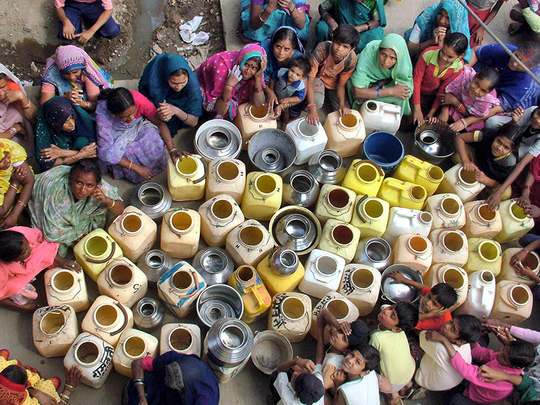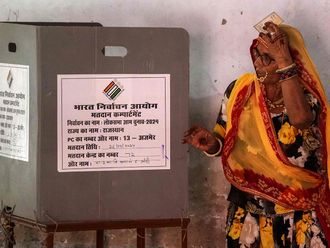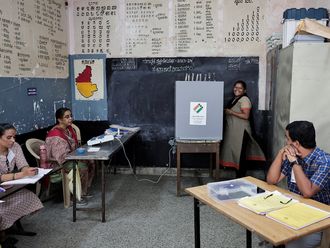
Mumbai: In April 2012, at the height of summer, Mumbaikars were shocked to read about the death of a woman in a Thane village who trudged several kilometres to fetch drinking water and died from sunstroke. The incident prompted an engineer to build a device that can convert humidity in the atmosphere into water, right in our homes.
Anit Asthana, a chemical engineer from the Indian Institute of Technology (IIT) — Delhi and an MBA from XLRI, Jamshedpur, was moved to do something about the problem of cheap drinking water, especially during the summer months and in the drought-prone regions of the country.
“After a lot of research and experiments, we have developed India’s first Air-Water Generator which can ‘make’ pure water from the humidity in the atmosphere, right in your home,” Asthana, managing director of ElectroWater Technologies Pvt. Ltd, Mumbai, told IANS.
The Air-Water Generator has already been successfully test marketed in the most rigorous conditions all over India from Mumbai to Rajasthan, Kashmir to the northeast and the coastal and mountain regions with encouraging results. It has just secured its first bulk order to supply 15,000 such generators to Jeevandeep Multipurpose Pvt. Ltd under the centre’s programme ‘Nirmal Jal Abhiyan’ and plans to flood the market with the products from February, as the summer sets in.
Available at present in two models, with three technology patents, the Air-Water Generator (AWG) can create between nine and 30 litres of water daily depending on the average humidity of very low to high, he said.
“We are all aware that water conservation is an important issue. With India facing water shortage or contamination problems, we must explore more non-conventional ways of sourcing and utilising water to combat scarcity and contamination,” said Asthana, whose company has now tied up with industrialist Dilip Piramal, the promoters of VIP luggage.
However, the technology to produce water from the air is not new and has been around in the US, Australia, Israel and some other countries for several years.
“The only problem was they don’t work in very low humidity conditions, the machines are very expensive and consume a lot of power, making them beyond reach of the masses,” Asthana explained.
For instance, similar machines work only with minimum 50-60 per cent humidity levels, consume around two units power per litre and cost over Rs200,000 (Dh12,000) per piece.
He went about indigenising the technology, created nearly three dozen prototypes and tested them all over India in various humidity levels, including as low as 30 per cent (During the winter season, Mumbai occasionally goes down to 10 per cent).
The two models finalised were found most suitable to Indian conditions, producing between 9-30 and 10-40 litres water, consuming between 0.6-1.2 units per litre, with the 28-kg generators costing Rs21,000 and Rs24,000 respectively.
Soon, the company plans to introduce AWGs with solar power panels and a battery operated portable models, slightly expensive, but can be used in offices, picnics or outdoor parties in remote areas, he added.
The solar panels will help the customers to save on electricity during daytime, and with batteries, they can use the stored energy for domestic purposes round-the-clock and go off the power grid totally, Asthana said.
“The unique features of the AWGs include manufacture under patented technology of plasma treatment, distributed and perforated heat exchanger which guarantees absolutely hygienic water, safe for infants and sick people,” Asthana said.
Buoyed by the initial response from the test-marketing, the company has set up a full-fledged manufacturing plant in Vasai, adjoining Thane district, with a capacity of up to 240,000 units per annum.
Discussing the drinking water scenario, Asthana said in many water scarcity areas or areas of groundwater contamination like in some villages of Punjab and Gujarat, besides perpetual drought situations like in certain regions of Maharashtra, the AWGs could prove to be a boon.
“Being an Indian invention with lowest cost coupled with the most energy efficient technology, the AWGs can be made available all over the country at a subsidised rate to solve the drinking water problems confronting millions in Indian villages.”
The ElectroWater Technologies Pvt Ltd, which has bagged the Ministry of Chemicals and Fertilisers Award in the category of Polymers for Public Welfare, also hopes to build a community model which can produce 5,000 litres of water per hour.
In view of the low cost and high efficiency technology, Asthana sees a potential global market for AWGs as water problems plague many countries in the world.
“With proper encouragement and benefits, this can even generate a lot of foreign exchange for India,” said Asthana whose company has pioneered low-cost and low-energy consuming portable air-conditioners, besides marketing bladeless fans.












